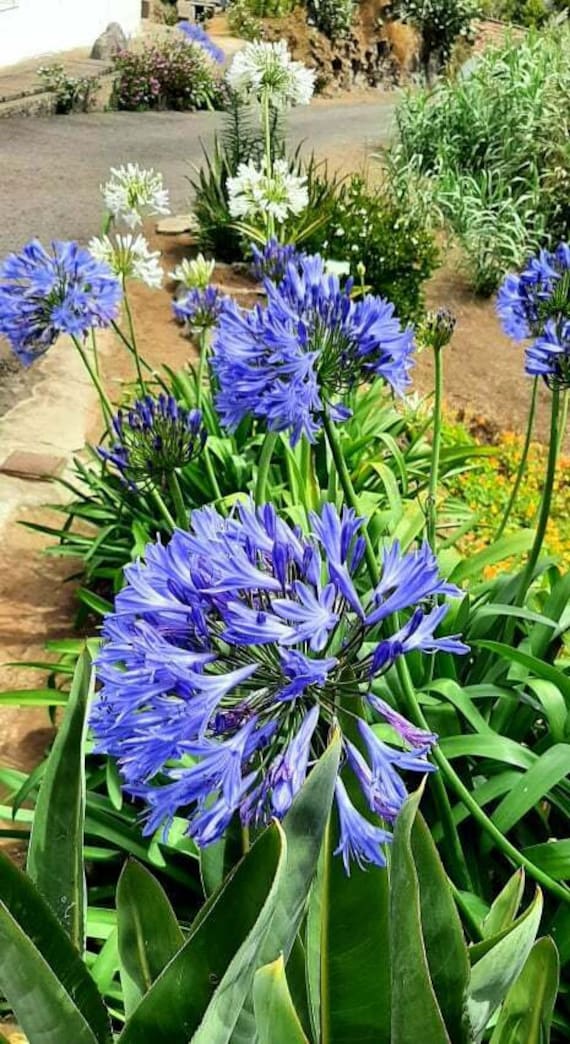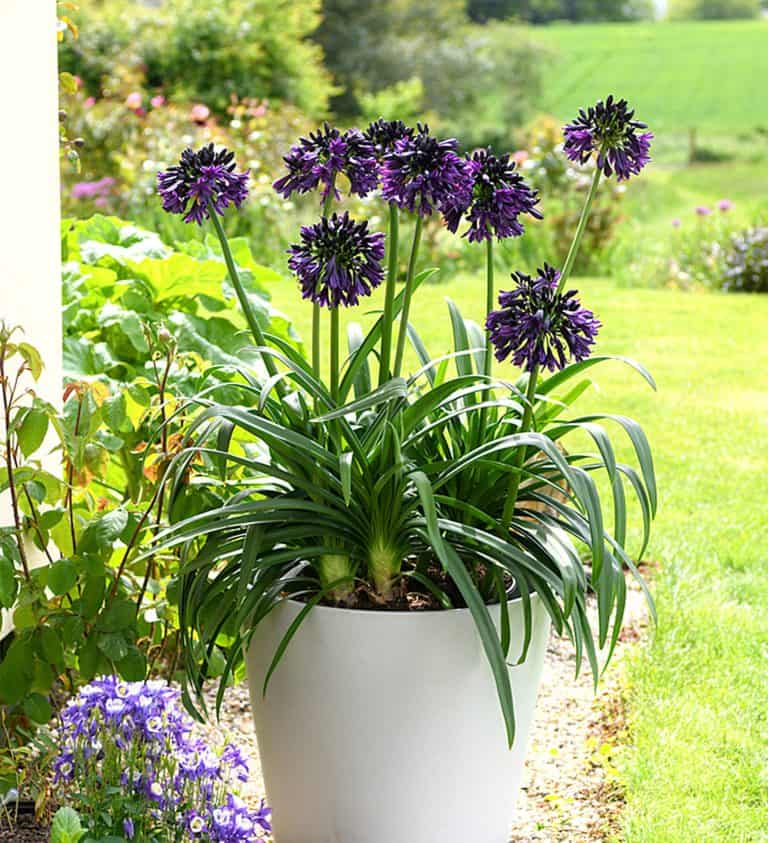Agapanthus Growing Conditions: Dirt, Sunshine, and Watering
Wiki Article
Grasping the Art of Agapanthus Treatment: Essential Actions for Healthy Growth and Dynamic Flowers
In the realm of horticulture, the farming of agapanthus stands as a fulfilling venture for those that look for to nurture these stylish flowering plants. With their striking flowers and graceful foliage, agapanthus has actually caught the attention of gardeners worldwide. However, accomplishing optimum development and dynamic blossoms calls for a nuanced method that incorporates different vital steps. From choosing the right range to understanding pruning strategies, the trip in the direction of cultivating thriving agapanthus plants is multifaceted and holds the vital to opening the complete possibility of these botanical gems.
Choosing the Right Agapanthus Range

When picking the appropriate Agapanthus variety for your garden, take into consideration variables such as climate viability, bloom color, and development routine. Agapanthus, frequently referred to as Lily of the Nile or African lily, comes in a variety of colors ranging from shades of blue and purple to white. Pick a flower shade that matches your existing yard combination to develop a harmonious landscape. Additionally, think about the climate in your area to make sure the Agapanthus variety you select can prosper in your particular problems. Some ranges are more forgiving of cold temperature levels, while others prefer warmer environments. Recognizing the growth routine of different Agapanthus selections is crucial for correct positioning within your garden. Some selections have a clumping growth routine, ideal for containers or boundaries, while others have an even more spreading nature, appropriate for ground cover or mass growings. By thoroughly examining these aspects, you can pick the excellent Agapanthus range to boost the charm of your yard.
Perfect Planting Problems
Thinking about the optimal ecological requirements is important for successful Agapanthus cultivation. Agapanthus grows in well-draining dirt with a somewhat acidic to neutral pH level. When growing, choose a place that receives complete sunshine to partial shade. In hotter environments, providing some mid-day color can avoid scorching of the leaves. Agapanthus plants are delicate to cold temperature levels and need to be secured from frost throughout winter months.To guarantee healthy growth and lively flowers, plant Agapanthus light bulbs at a depth of about 2-4 inches and area them 8-12 inches apart. Adding natural issue, such as compost, to the soil can enhance drainage and fertility, advertising robust origin growth. Mulching around the base of the plants assists retain wetness and subdues weed development. Routine watering is vital, especially during the expanding period, to keep the dirt regularly moist but not saturated.
Watering and Feeding Tips
Keeping proper moisture degrees and offering necessary nutrients are crucial elements in the care program for Agapanthus plants. When it comes to sprinkling Agapanthus, it is critical to strike a balance. If overwatered, these plants favor consistently moist dirt but are vulnerable to root rot. During the expanding season, water deeply as soon as a week, making certain the soil is well-draining to stop waterlogging. In hotter environments or during periods of drought, more regular watering may be required to maintain the dirt uniformly damp. Nonetheless, decrease watering in the winter to stop water logged problems.Feeding Agapanthus is necessary for advertising healthy and balanced development and prolific blossoms. Use a balanced fertilizer, such as a 10-10-10 formula, in the i thought about this early spring as new growth arises. By following these watering and feeding ideas, you can ensure article source your Agapanthus plants prosper and generate dynamic, lasting flowers.
Pruning Strategies for Agapanthus
Trimming Agapanthus plants at the proper times and with appropriate techniques is important for maintaining their health and advertising ideal development and flowering. The perfect time to trim Agapanthus is in late winter or early spring prior to new development arises.Deadheading invested flowers can also redirect the plant's power right into creating even more blooms instead than establishing seeds. If you desire to collect seeds for breeding, leave some blossoms to completely dry and mature on the plant.
Remember to make use of clean, sharp devices to make exact cuts and reduce the threat of introducing illness. Agapanthus. Normal pruning will certainly help keep your Agapanthus looking cool and healthy and balanced while guaranteeing a bountiful display of stunning blossoms
Managing Common Bugs and Conditions
After guaranteeing proper trimming strategies for Agapanthus, it is important to address common bugs and illness that can affect the wellness and vitality of these plants. Agapanthus plants are normally sturdy yet can still succumb particular issues. One common insect that influences Agapanthus is the Agapanthus gall midge. This small, orange fly lays its eggs in the vegetation, leading to altered growth and flower buds that fail to open up. To battle this pest, prune and damage any afflicted plant components and think about using insecticidal soap.Furthermore, Agapanthus plants can experience from origin rot if they are grown in inadequately draining dirt. By being cautious and taking timely activity against conditions and insects, you can aid your Agapanthus plants grow and create anonymous dynamic flowers. Agapanthus.

Final Thought
In conclusion, understanding the art of agapanthus care involves selecting the right range, providing excellent planting conditions, appropriate watering and feeding, suitable trimming techniques, and dealing with typical bugs and illness. By adhering to these necessary actions, you can ensure healthy growth and dynamic blossoms for your agapanthus plants. Bear in mind to consistently check and maintain your plants to promote their total well-being and durability.To guarantee healthy development and vivid blossoms, plant Agapanthus light bulbs at a depth of concerning 2-4 inches and space them 8-12 inches apart. By complying with these watering and fertilizing ideas, you can ensure your Agapanthus plants thrive and generate vibrant, durable blooms.
One usual bug that influences Agapanthus is the Agapanthus gall midge. Additionally, Agapanthus plants can experience from root rot if they are planted in poorly draining pipes soil. By adhering to these crucial actions, you can make certain healthy and balanced development and vibrant blooms for your agapanthus plants.
Report this wiki page